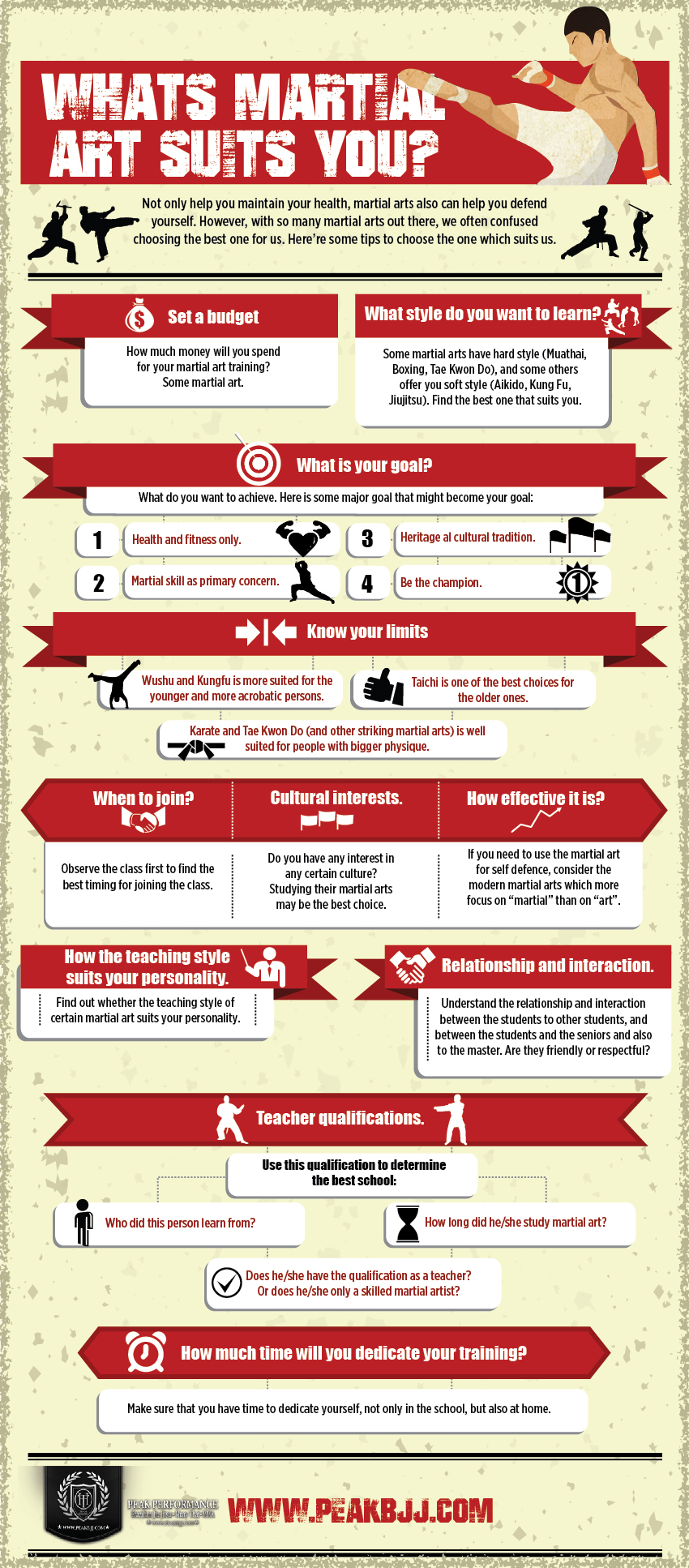The History And Advancement Of Martial Arts: From Its Ancient Origins To The Techniques Practiced Today
The History And Advancement Of Martial Arts: From Its Ancient Origins To The Techniques Practiced Today
Blog Article
Staff Writer-Borup Clements
Step into the world of martial arts, where old origins and modern strategies clash in an exhilarating trip of technique and self-discovery.
As you delve into the background and advancement of this captivating art kind, prepare to be captivated by the social impacts, technological developments, and profound viewpoint that have shaped it over centuries.
From the battlegrounds of ancient worlds to the training premises these days, martial arts have actually stood the test of time, regularly adapting and expanding.
Each strike, each activity, brings with it the weight of numerous years of custom and knowledge, passed down via generations. This is a story of strength, of warriors who sought not only physical expertise, but additionally self-confidence and consistency.
Join us on this amazing exploration as we discover the tricks, the legends, and the transformational power of martial arts.
Prepare to be influenced, tested, and for life transformed by the background and development of martial arts.
Social Impacts on Martial Arts
As you discover the background and development of martial arts, you'll swiftly uncover the remarkable methods which cultural influences have formed these fight strategies.
From the ancient people of China and India to the extra recent growths in Japan and Brazil, martial arts have been heavily influenced by the cultures in which they stemmed.
For example, Chinese martial arts, such as Martial Art and Tai Chi, are deeply rooted in the approach of Taoism and the principle of Yin and Yang.
On the other hand, Japanese martial arts, like Martial arts and Judo, reflect the samurai warrior practices and the worths of technique and honor.
Likewise, https://www.sandiegouniontribune.com/opinion/story/2022-05-17/2022-election-q-a-with-dan-kapelovitz-california-attorney-general-candidate , Capoeira, integrates elements of African dancing and songs, mirroring the cultural heritage of African slaves in Brazil.
https://what-is-criminal-law28261.ttblogs.com/9804464/vital-elements-to-identify-in-a-top-tier-criminal-law-office give each fighting style its unique qualities yet additionally supply a much deeper understanding of the historical and social contexts in which they progressed.
Technical Developments and Martial Arts
With the increase of innovative weaponry and cutting-edge training tools, you have actually had the ability to boost your abilities and adjust to the ever-changing fight landscape.
Technological advancements have actually reinvented the way martial arts are practiced and shown. Virtual reality simulations now allow you to train in realistic combat scenarios without the risk of physical damage. High-speed cams catch every step, allowing you to evaluate and excellent your methods. Wearable devices monitor your heart price, breathing, and muscle mass activation, giving instant responses on your efficiency.
In addition, the development of customized equipment, such as resistance bands and agility ladders, has actually enabled you to improve your rate, stamina, and dexterity. These technical innovations have not only made training a lot more efficient yet have actually additionally pushed the limits of what is feasible in martial arts, enabling you to get to brand-new elevations in your practice.
The Philosophy and Principles of Martial Arts
The philosophy and principles of martial arts are deeply rooted fit your state of mind and instilling technique, emphasis, and regard in your technique.
1. Mindset: Martial Arts instructs you to develop a strong and durable state of mind. It enables you to conquer challenges both on and off the floor covering, pressing your limitations and standing firm despite hardship.
2. Technique: Martial Arts demands technique and self-discipline. Through routine training and adherence to rigorous rules and techniques, you learn to manage your impulses and create a solid job principles.
3. Emphasis: Martial Arts needs intense emphasis and focus. By educating your mind to be present in the minute, you enhance your capacity to react swiftly and properly throughout fight scenarios.
4. Respect: Martial Arts emphasizes regard for oneself, teachers, training companions, and opponents. It educates you to value the abilities and experiences of others, cultivating a sense of camaraderie and sportsmanship.
Final thought
Congratulations on completing your trip through the captivating world of martial arts! Throughout this expedition, you have actually witnessed the abundant background and remarkable evolution of these combat techniques.
From their ancient beginnings to the modern techniques we see today, martial arts have been formed by social impacts.
The combination of modern technology has likewise played a significant function in revolutionizing the means martial arts are educated and practiced in today day.
However, it is very important to remember that martial arts are more than just physical combat. They encompass extensive viewpoints and guiding principles that surpass the mere act of combating.
Take a minute to assess this anachronistic experience and value how the legacy of martial arts continues to flourish in today, going beyond time and limits.
